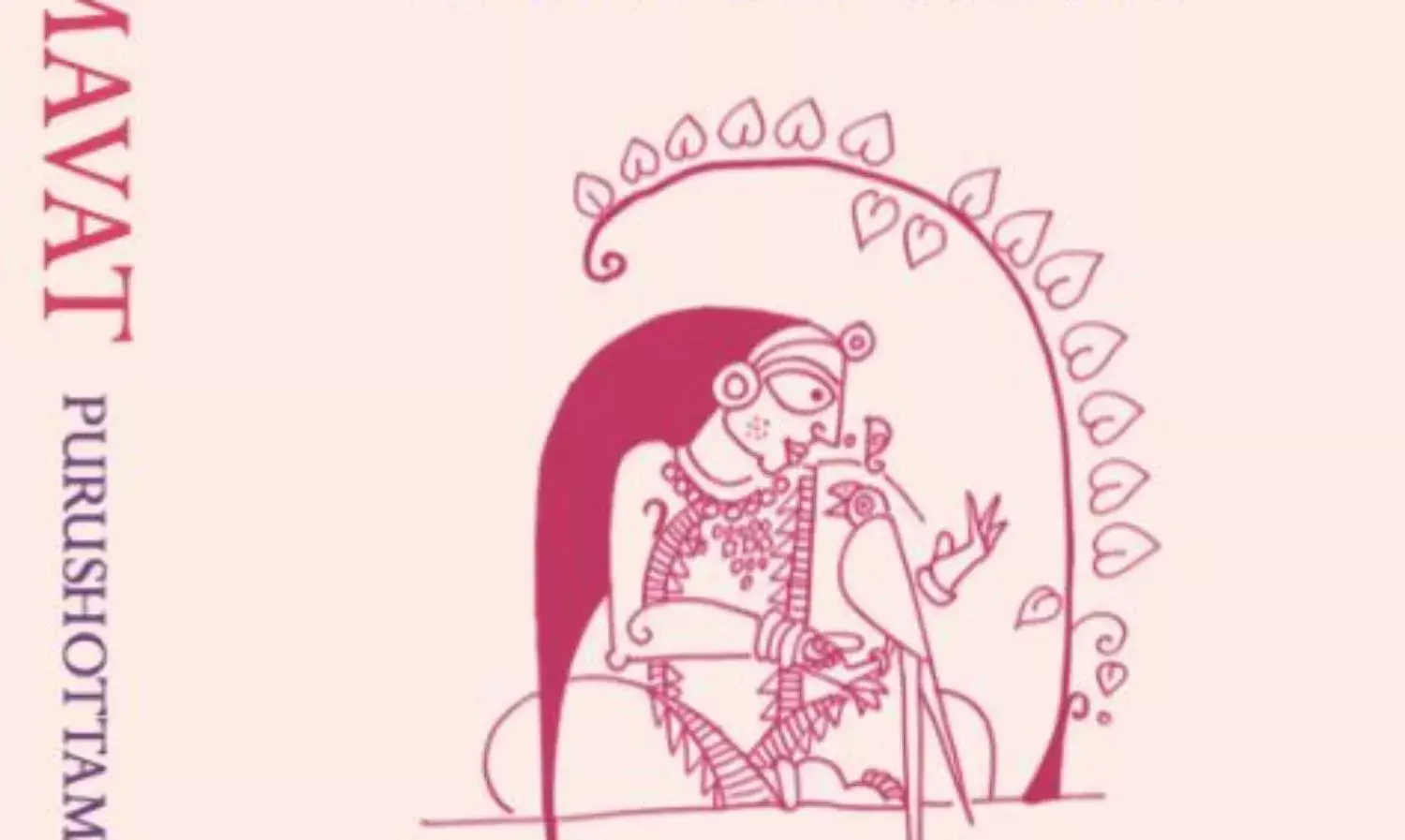Padmavat: A Celebration of Love and Friendship.
Book review

The historicity of Padmavati or Padmini, princes of Simhal and wife of her lover King of Chittor is a matter of some debate and controversy among historians. In the book under review, Professor Purshottam Agrawal, while hinting at this debate makes a very significant point regarding memory and history.
According to him, “Generally, popular memory turns the historical events into legends; Jayasi’s genius has turned the legend of Padmini into ‘real history’; in fact she has become more than real—irrespective of her historicity. His creative genius created not only a poetic work of historic importance, but history itself.” ( p.53) The author also informs us of the only pre-Jayasi reference to ‘Padmini of Chittor’ in pre-Jayasi literature. This is Chhitai Charit (composed between 1475-80 i.e. pre-Jayasi reference to Padmini) which depicts the of obsession of Alauddin Khilji for her.
The epic on Padmavati was originally written by Sufi poet Malik Mohammad Jayasi, also called Indian researcher of truth, in the 16th Century who observed the presence of Padmini in Rajasthani ‘oral’ traditions and legends (though not in any written versions) and made it a vehicle of his own poetic reflections.
Only after Jayasi’s Padmavat, two well known written sources by Hemratan (1588) and Jatmal (1627) depicted Padmini’s legends (p.39). Jayasi. according to Agrawal derives the inspiration of writing the epic padmavat from his memories of the first garden’ i.e. Jayas town in Uttar Pradesh, a name after which he is named as Jayasi.
In his commentary on Padmavat Agrawal argues that the time-period when Jayasi composed his epic poem on Padmini actually falls in the ‘early modern era’ and not the ‘medieval’ era. Jayasi’s epic was written in Awadhi dialect which is a story of Rajasthani bards and combines metaphors from both the Islamic and Hindu worlds. Indeed Jayasi himself had a position of tolerance and respect for the followers of other religious faiths also (p. 25).
Citing beautifully the works of Bhakti tradition in India in that period such as Kabir, Mira, Tulsidas etc., Agrawal emphasizes that individuality and change of attitude towards rigid social traditions which were features of modernity got started challenging by people much before colonial rule began.
Nevertheless the author also warns readers that this commentary is more towards understanding the tale of love in its various dimensions and not of understanding history, religion, caste or invasions as the focal point of discussion. Agrawal hence appreciates, as rightly marked by Devdutt Paitnaik too in his illuatrations, Jayasi’s epic as celebration of womanhood against ‘the male centric monastic view of the time where giving up women is valorized and appreciating women is equated with weakness and moral decay’ (p.7).
In bringing the characters of Ratansen, King of Chittor and Sultan Aluuddin Khilji of Delhi, from Jayasi’s work, the author highlights the power of love or the regard for one’s wishes over the power of force. Jayasi suffered excessive mental pain due to his physical appearance marred by smallpox in his childhood and this haunted him through his life. He transcended this by imagining the perfect beauty of Padmini and this made the tale of love and its spiritual anguish the central focus of his epic poem.
Hiraman the parrot, Padmini’s friend, philosopher and guide in Jayasi’s epic receives reflective and moving attention in this bookAgarwal celebrates the friendship between Padmini and Hiraman in these words, “The bond of love and friendship between Padmavati and Hiraman permeates this epic in such an evocative manner that every sensitive reader ends up longing for at least one such bond of friendship in his/her own life.” (p.86)
Padmavati belonged to Simhal and according to the author, in the imagination of Padmavat’s poet, the utopia of Simhal is located somewhere beyond Odisha.
Agrawal insists that the celebration of ‘human love’ is the central message of the epic which is shown through the story of Padmavati and Ratansen. Human love can take one to divinity. Consent and persuasion is the ethics of this human love and not force and aggression.
Ratansen is shown as a ‘love yogi’ ( Agrawal’s own phrase) in the epic who believed in individual sadhana, persuasion, struggle and sacrifice to the extent of almost committing sati (by him) as a symbol of his desire of love and devotion while Alauddin is shown as a cunning personality in the context of understanding the means of love or erotic feeling. However, apart from the obsession for Padmavati, Alauddin is otherwise a competent ruler, not a monster.
Agrawal does well in reminding us of the treatment Alauddin gets in Chhitai Charit. He abducts Chhitai but, reminded by her, that she has always seen him as a father-figure , actually treats her like a daughter. (p.41).
Integrity in love is another vital message to the readers pf this epic. When the dooti named Kumudini deputed by Devpal tried to make Padmavati emotional introducing herself as someone from her maika, Padmavaati opened up initially but later when the dooti suggested a ‘change of taste’ and hinted about the ‘riches and pomp of Devpal’, Padmavati simply responded, ‘How dare you compare that lowly person with my beloved?’ (p.169).
Even the dooti from Delhi sent by Alauddin could not take Padmavati along with her converting her into a ‘jogin’. The author insists here that her love for her husband was so deep that she did no remain a passive feeble woman but approached Gora and Badal with a plan to free her husband from Sultan’s custody.
Padmavat : An Epic Love Story is a masterpiece.
Agrawal, Purushottam (2018) Padmavat : An Epic Love Story, New Delhi: Rupa Publications. pp. 194. Rs. 295.
(Nabanita Baruah is a Ph.D Research Fellow at Jawharlal Nehru University)



